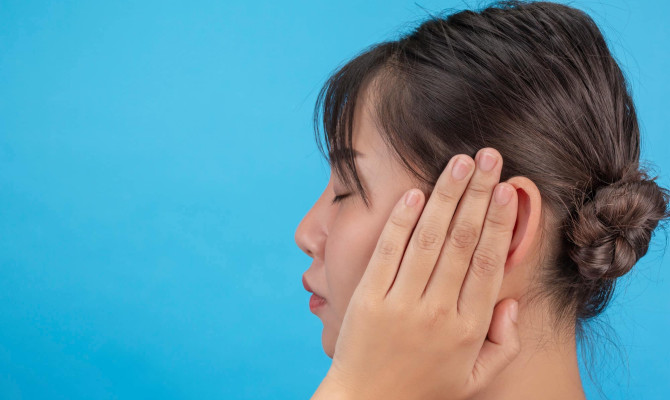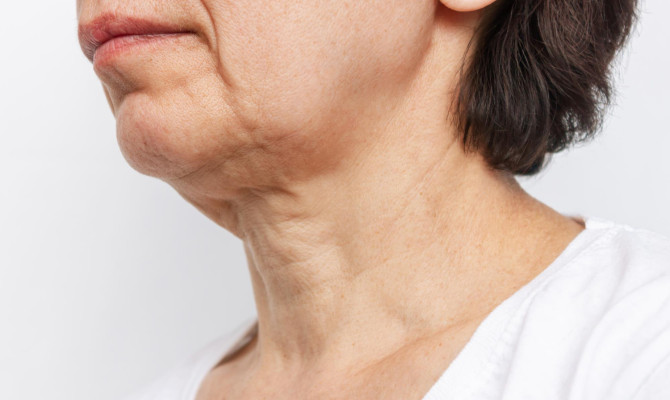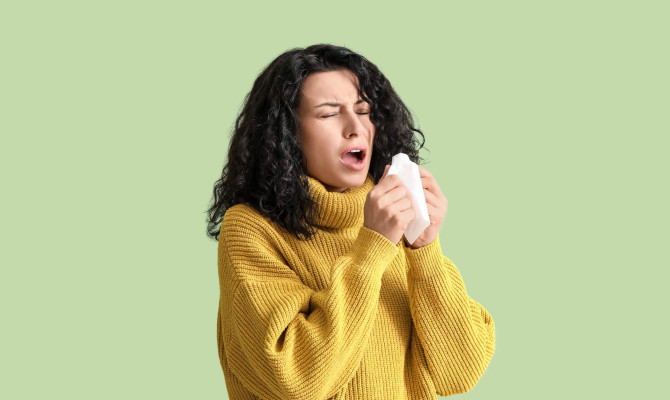Dry Eye Syndrome : Symptoms, Causes, Risk, and Management

- Dry Eye Syndrome
- 14 Aug 2023
Overview
About Dry Eye
If your tears are insufficient in lubricating your eyes, you may be suffering from dry eye disease. There are many causes for tears to be insufficient and unreliable. Insufficient tear production or the production of low-quality tears are two potential causes of dry eyes. The volatility of tears causes inflammation and superficial injury to the eye. The discomfort of dry eyes can be very cumbersome. Dry eyes can cause irritation and discomfort. In some environments, like an air-conditioned room, traveling, or a computer screen, you may find that your eyes feel dry.

Types
Types of dry eye disease
Dry eye illness may sound like it simply implies your eyes aren’t producing enough tears, but that’s not the case. That is only a fraction of the whole tale. Dry eye syndrome can take many forms.
Aqueous deficient dry eye
- If your eyes don’t generate enough tears, you have a condition called aqueous deficiency dry eye.
- Aqueous tears are secreted by the lacrimal gland. The liquid portion of your tear film consists of these tears. Inflammation of the lacrimal gland, caused by some inflammatory disorders, can reduce tear production.
Evaporative dry eye
- When tears vanish too rapidly, a condition known as evaporative dry eye can develop.
- This indicates a malfunction of the glands in your eyes responsible for producing the tear film’s exterior, oily coating. The oily layer is therefore unable to prevent the liquid layer from evaporating because it itself is unsteady.
Mixed dry eye
- Some individuals have both a lack of watery tears and unstable tears, a condition known as mixed dry eye.
- This indicates that your tear production is inadequate and that your tear layer is not secure. The signs of dehydrated eyes are caused by both of these issues.
Symptoms
Symptoms of dry eye syndrome
- Painful sensations of stinging, scorching, or pressing around the eyes. 2Symptoms| Researched based study from Nlm.nih.gov
- A feeling of roughness or foreignness. 2Symptoms| Researched based study from Nlm.nih.gov
- Epiphora, or tearing, occurs because of dryness, which causes discomfort or irritation, and intermittently causes excessive fluid production. 2Symptoms| Researched based study from Nlm.nih.gov
- Sharp or dull discomfort can be confined to the area around the pupil, the back of the eye, or even the front.
- A frequent complaint is blurred vision, especially fleeting blurred vision, which may also manifest as reflections or halos around lights at night. 2Symptoms| Researched based study from Nlm.nih.gov
- Unstable vision and comprehension problems.
- Heavy eyes, or having trouble opening your eyes.
- Frequent blinking
- Twitching of the eyelid
- The inability to cry is a symptom of serious DED 2Symptoms| Researched based study from Nlm.nih.gov
Causes
Causes of dry eye syndrome
Reduced tear flow
Insufficient tears production is associated with dry eyes and is medically called keratoconjunctivitis sicca.
Reduced tear secretion is often caused by: 1Causes| Researched based study from Aao.org
- Aging Sjogren’s syndrome
- Lupus
- Sarcoidosis
- Allergic eye disease
- Graft-versus-host disease
- Thyroid problems
- Vitamin A insufficiency
- Medications such as antihistamines, decongestants, HRT, SSRIs, and SNRIs, as well as medications for hypertension, acne, birth control, and Parkinson’s disease. 1Causes| Researched based study from Aao.org
- Dry eyes can be a transient side effect of corneal nerve desensitivity brought on by any injury to nerve, prolong or improper uses of contact lens, or laser eye surgery.
Accelerated drying of the eyes
The meibomian glands, which create an oily coating at the tip of your eyelids, may become blocked. People who suffer from rosacea or another form of skin disease are more likely to have their meibomian glands blocked. 1Causes| Researched based study from Aao.org
Increased tear discharge often results from: 1Causes| Researched based study from Aao.org
- Blepharitis
- Reduced blinking rate
- Issues with the eyelids, such as protruding eyelids and drooping eyelids
- Eye drops containing preservatives
- Dry air, smoke, or the wind
- Deficiency in vitamin A
Risk
Risk factors of dry eye syndrome
There are many potential risk factors of dry eyes.
- Age: Dry eyes affect the vast bulk of individuals over the age of 65.
- Gender: Dry eye symptoms are more common in women because of the hormonal shifts that occur during pregnancy, taking oral contraceptives, and entering menopause. 4Risk| Researched based study from Nei.nih.gov
- Medications: Antihistamines, blood pressure drugs, antidepressants, and decongestants can cause a decrease in tear formation. 4Risk| Researched based study from Nei.nih.gov
- Health problems: Dry eye complaints are more common in autoimmune diseases like rheumatoid arthritis, thyroid disorders, and diabetes. Dry eyes can be caused by several other conditions, including blepharitis, inflammation of the eye’s surface, and inward or outward eyelid shifting. 4Risk| Researched based study from Nei.nih.gov
- Environment: Dry eye complaints can be brought on by being exposed to smoke, wind, or a particularly arid environment. Dry eyes can be caused by gazing at a computer screen for extended amounts of time without blinking.
- Other causes: Dry eyes may be exacerbated by prolonged contact lens wear or after eye surgeries like LASIK.
Diagnosis
Dry eye syndrome diagnosis
Doctors will look at your medical history, perform an eye exam, and run some tests to determine if you have dry eyes. 5Diagnosis| Researched based study from Nlm.nih.gov
Clinical history
To better understand your symptoms and medical background, your doctor may ask you to complete a questionnaire. Doctors might ask questions such as:5Diagnosis| Researched based study from Nlm.nih.gov
- How long have you been experiencing problems linked to your eyes?
- Symptom-exacerbating environmental variables
- Associated symptoms like dry mouth, cavities, oral ulcers, tiredness, and joint discomfort
- Allergies.
- Eye illness family history.
- Prior medical history of sensitivities and persistent viral illnesses.
- Surgical records.
- Whether you are a smoker or a passive smoker.
- The frequency and nature of your eyelid cleaning routine.
- History of ocular injury.
Eye examination
Your doctor will perform an in-depth eye test to assess your ocular health and identify the source of your symptoms. During your checkup, your doctor will:5Diagnosis| Researched based study from Nlm.nih.gov
- Check for symptoms of dry eyes.
- Attempts to rule out other illnesses as a potential source of your symptoms.
Dry eye diagnosis tests
Examiners may employ a battery of exams, such as
Slit-lamp examination
- The number of tears produced by your eyes can be evaluated with a slit-lamp examination. The doctor will check your eyes by shining a bright light into them and looking under a microscope at your eyelashes.5Diagnosis| Researched based study from Nlm.nih.gov
Schirmer’s test
- Schirmer’s test measures fluid output. A tiny piece of paper is placed along the outer corner of your eye, and the caregiver leaves it there for a few minutes. In reaction, your eye generates tears, which are then measured by your provider by observing how much paper they cover.5Diagnosis| Researched based study from Nlm.nih.gov
Tear breakup time (TBUT)
- The Tear breakup time (TBUT) measures how fast your tears vanish after being shed. The duration that the pigment stays in your tear film (before it breaks down) is measured by the doctor under a microscope. They time how long it takes for your eye to become dry after you’ve stopped blinking. Dry eye illness may be present if the duration is less than 10 seconds.5Diagnosis| Researched based study from Nlm.nih.gov
To rule out any underlying diseases that could be causing your dry eye, your doctor may request additional tests, such as antibody tests.
Management

Treatment and management of dry eye syndrome
Dry eye syndrome treatment typically consists of multiple phases, each of which may be tailored to the patient’s specific condition. 4Management | Researched based study from Nei.nih.gov
Symptoms can be alleviated
- With the use of ocular lubricants
- Warm compresses
- Lid scrubs
- Oral essential fatty acids
- Changes to the environment
- Identification and elimination of offending topical and systemic agents
- As well as with education about the condition and modification of lifestyle (such as less screen time). 4Management | Researched based study from Nei.nih.gov
Additional methods of therapy include
Eye drops
- Your doctor may prescribe one of several different kinds of ocular medications. Discuss your needs with your service supplier to determine what’s right for you.
Artificial tears
- Lubricating and soothing your eyes, artificial tears provide short-term relief from symptoms. Even though they’re sold without a prescription, you should still consult your doctor before giving them a try. However, the root reason for dry eye illness is not addressed by artificial tears.4Management | Researched based study from Nei.nih.gov
Ointments
- If you find that your eyes dry out while you sleep, an ointment is a good option for nighttime use because of its heavier consistency.
Eye drops containing cyclosporine A (Restasis®)
- Reduce irritation in the tear ducts, resulting in increased tear production and improved tear quality. After three months, the majority of patients experience a reduction in their symptoms.4Management | Researched based study from Nei.nih.gov
Lifitegrast (Xildra®) eye drops.
- These solutions are effective in alleviating both the causes and effects of dry eye. You might start to feel better within two weeks, even though the complete impact won’t kick in for another 90 days.4Management | Researched based study from Nei.nih.gov
Varenicline (Tyrvaya®) nasal spray
- Varenicline directly stimulates your trigeminal nerve, causing your basal tear output to rise.4Management | Researched based study from Nei.nih.gov
Autologous serum drops
- These are synthetic tears formulated using your own serum
Corrective glasses for therapy
- You can prevent further harm to your cornea by wearing soft bandage glasses. Rigid scleral lenses are bigger than conventional contact lenses and rest directly on the sclera instead of the cornea. They serve multiple purposes, including improving eyesight and protecting the eyes.
Surgical punctal occlusion
- A practitioner will place a small plug into the punctum, or weeping drain, in your lower eyelid. This “plugging” helps keep more tears in the eye. If your dry eye condition improves, your doctor may recommend punctal closure as a lasting solution.
Prevention
Prevention of Dry eye
If you have dry eyes, it’s important to recognize the triggers that bring on your discomfort. Then, figure out how to stay away from the causes of your watery eyes.
- Avoid exposure to direct airflow-Don’t point the blades of your hair drier, vehicle heater, air conditioner, or fan in your direction. 3Prevention | Researched based study from Aoa.org
- Reduce dry air exposure-A humidifier can remedy the issue of arid interior air that occurs during the winter.
- Wrap-around shades or other forms of eye protection-Eyeglasses can be outfitted with protective covers that cover the top and sides to keep out dust and weather.
- Make sure to rest your eyes every so often-It’s important to give your eyes a rest every so often when you’re reading or doing something else that demands focused vision. Moving eyeballs or Closing your eyes for brief periods can help prevent your tears from evaporating too quickly when you’re in a place like that. 3Prevention | Researched based study from Aoa.org
- Lower the computer’s screen so that it’s below eye level-Keep your computer screen lower than eye level to reduce the amount you have to open your gaze. Increase the frequency of blinking . 3Prevention | Researched based study from Aoa.org
- Quit smoking and stay away from secondhand smoke-If you smoke and want to stop, talk to your doctor about what methods might work best for you. Avoid being around smokers if you don’t want to start. Dry eyes are made worse by smoking.
- Make frequent use of tear substitutes-If your eyes tend to get dry regularly, you should use eye drops even if they don’t seem to need them.3Prevention | Researched based study from Aoa.org
Takeaway
Takeaway
If you are suffering from dry eye syndrome, you may feel more at ease if you get your dehydrated eyes treated. Changes in living and ocular drops are examples of such therapies. You’ll probably have to keep doing this forever if you want to keep the dry eye complaints at bay. Dry eyes can be caused by several variables that hinder the proper functioning of your tear film. This is why doctors classify dry eye as an incredibly complex condition. Numerous intricate variables contribute to its development. Therefore, it may take some time to determine the underlying cause of your problems. Establishing treatment with an ophthalmologist or optician is crucial for managing dry eye syndrome.
Any feedback on this article?
 This Articles content was accurate
This Articles content was accurate Very Informative Article
Very Informative Article I have a question or a comment
I have a question or a comment
 This article contains inaccurate content
This article contains inaccurate content This article was not helpful
This article was not helpful I have a question or a comment
I have a question or a comment
We appreciate your helpful feedback!
Checkout our social pages
References
-
American Academy of Ophthalmology
What Is Dry Eye? Symptoms, Causes and Treatment | Causes
-
National Library of Medicine
Dry Eye Syndrome | Symptoms
-
AMERICAN OPTOMETRIC ASSOCIATION
Dry eye | Prevention
-
National Eye Institute
Dry Eye | Diagnosis | Management
-
National Library of Medicine
The Pathophysiology, Diagnosis, and Treatment of Dry Eye Disease | Diagnosis





































